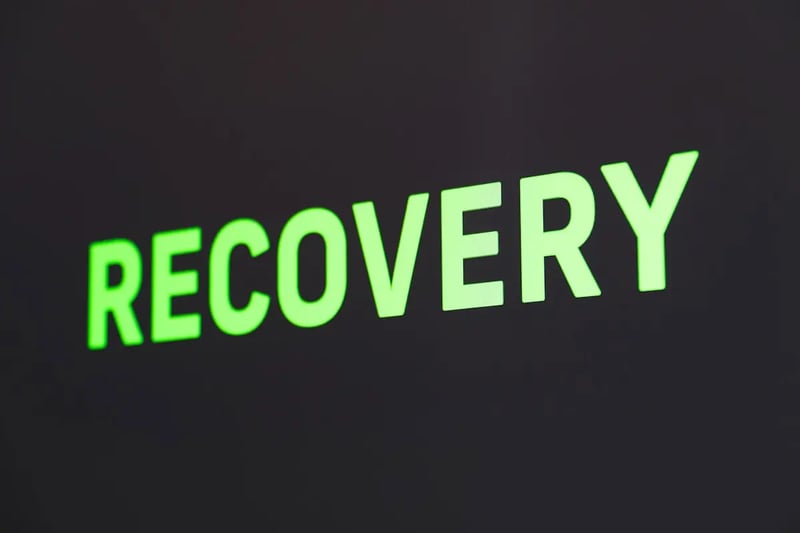
Get Help for Alcohol Recovery Resources
Facing an EtG test while trying to cut back on alcohol can feel overwhelming. Maybe you promised yourself you would stay sober, only to restart after a stressful week. Perhaps you are supporting a loved one who keeps worrying about laboratory results and legal obligations. No matter the circumstances, you are not alone. This page curates trustworthy hotlines, support groups, and treatment navigators so you can move from panic to a realistic plan.
The goal is to help beginners—people with little or no background in recovery services—understand how to request reliable help. Every recommendation below meets three standards:
- Confidential: You can speak openly without fear that your words will be shared without permission.
- Accessible: Each resource is free or low-cost, with phone or online options.
- Relevant to EtG planning: Every program helps you build habits that make sober testing days easier.
Why Getting Help Matters When You Use the EtG Calculator
Our main calculator estimates when EtG (ethyl glucuronide) levels fall below common urine testing cutoffs like 500 ng/mL and 100 ng/mL. The math is powerful, but numbers alone cannot remove the anxiety that drives many people back to drinking. Support networks add the human element: people to call when cravings spike, professionals who understand withdrawal, and fellow travelers who share practical strategies. When you combine accurate timelines with compassionate guidance, you reduce the risk of relapse and gain breathing room to make better decisions.
Think of recovery help as preventive maintenance. Each conversation, meeting, or counseling session is one more tool keeping you aligned with the sober plan you entered into the calculator.
How to Ask for Help Safely
Reaching out can be intimidating, especially if you worry about judgment. The following step-by-step checklist simplifies the process:
- Decide whether the situation is urgent. If someone has overdosed, is suicidal, or cannot stay conscious, call 911 immediately. For non-emergencies, continue with the following steps.
- Prepare a short summary. Write down recent drinking habits, upcoming EtG testing dates, medications you take, and any medical concerns. Having notes prevents blank moments during difficult calls.
- Choose your communication style. Hotlines provide anonymous voice support, while online programs often use video or chat. Pick the format that feels safest and most comfortable.
- Set expectations. Decide what you hope to gain: coping strategies, detox placement, support meetings, or family guidance. Sharing your goals helps the counselor tailor advice.
- Follow up. Every call or meeting should end with a next step—another session, a local referral, or a printed guide. Mark it in your calendar just like the EtG clearance estimates.
Remember that you can call more than once. Many hotlines encourage follow-up conversations as your sobriety plan evolves.
Featured Hotlines and Programs
Below are vetted resources that specialize in alcohol recovery and related mental health support. All phone numbers listed are within the United States.
-
SAMHSA National Helpline (1-800-662-HELP / 4357, TTY: 1-800-487-4889)
Available 24/7/365 in English and Spanish, this confidential service from the Substance Abuse and Mental Health Services Administration connects callers to local treatment providers, support groups, and community-based organizations. You can ask for referrals tailored to your insurance or sliding-scale needs. -
Alcoholics Anonymous (AA) Meeting Finder
Visit aa.org to locate in-person or virtual meetings worldwide. AA meetings are peer-led and anonymous. Newcomers can simply listen; there is no requirement to share. Use the site’s “Find AA Near You” link to access local hotlines staffed by volunteers who understand early recovery struggles. -
SMART Recovery
SMART (Self-Management and Recovery Training) offers science-based group meetings focusing on cognitive-behavioral tools. Their online schedule includes daily chats and voice meetings. SMART is ideal if you prefer a self-empowerment approach alongside the EtG calculator’s data-driven insights. -
NIAAA Alcohol Treatment Navigator
The National Institute on Alcohol Abuse and Alcoholism created this navigator to help you compare treatment types—outpatient counseling, medication-assisted therapy, residential programs—and learn which questions to ask providers. It is especially useful if you want medical supervision or evidence-based therapies. -
Al-Anon and Alateen
Loved ones also deserve support. Al-Anon (for adults) and Alateen (for teens) share coping skills for families affected by someone else’s drinking. Meetings explain how to set boundaries, encourage treatment, and care for your own wellbeing. -
State and Local Recovery Agencies
Every state maintains a mental health or substance use agency. Visit samhsa.gov/find-support/health-care-or-support/support-group-or-local-program to locate yours. These agencies often provide transportation vouchers, inpatient waitlists, and culturally specific programs.

Matching Support Options to Your Situation
Not every resource fits every person. Use the following guide to choose wisely:
- If you need immediate emotional grounding, start with SAMHSA’s helpline. The counselor will stay on the phone, help you breathe, and offer actionable next steps.
- If you thrive on community accountability, attend AA or SMART meetings. They offer daily structure, shared wisdom, and friendly reminders to track standard drinks accurately.
- If you suspect a medical concern, such as withdrawal symptoms or co-occurring disorders, use the NIAAA navigator to connect with licensed clinicians who can prescribe medications like naltrexone or acamprosate.
- If you are a family member, join Al-Anon or Alateen. Learning communication skills and relapse warning signs helps you support someone else without burning out.
When you contact a provider, ask these four questions:
- What services are best for someone preparing for EtG testing?
- How do you protect my privacy and data?
- Do you offer virtual or after-hours sessions?
- What costs should I expect, and do you have sliding scales?
Taking notes on the answers will make your next call smoother and your recovery plan clearer.
Integrating Help with the Realistic EtG Calculator
Recovery guidance and the calculator work hand in hand. Here is a simple workflow you can adopt today:
- Log your standard drinks accurately. Use the Standard Drink Guide when estimating your intake. Precise numbers lead to better EtG predictions.
- Run the calculator after every drinking episode. Note the projected clearance time for both 500 ng/mL and 100 ng/mL cutoffs.
- Share the estimate with your support network. Counselors and sponsors can help you add safety buffers—many recommend waiting an extra 12 to 24 hours beyond the calculated time when possible.
- Schedule meetings during the waiting window. Use recovery groups or therapy sessions to reinforce coping strategies while the body eliminates EtG.
- Review progress weekly. If the calculator shows repeated high drink counts, create an action plan with your support team to address triggers.
This integrated approach transforms the calculator from a stress-inducing gadget into a coaching partner that complements human encouragement.
When Emergencies Happen
If someone loses consciousness, has severe chest pain, or expresses suicidal thoughts, the situation requires emergency services. Call 911 or your local emergency number immediately. If you are in the United States and need urgent mental health support but the danger is not life-threatening, dial 988 to reach the Suicide & Crisis Lifeline. Inform responders about recent alcohol use so they can provide appropriate medical care.
Please remember that this page is for educational purposes. It cannot replace personalized medical advice, legal counsel, or therapy. Always follow recommendations from licensed professionals and consider consulting a physician before stopping alcohol abruptly, especially if you have a history of withdrawal symptoms.
Quick-Start Checklist
- Bookmark this page so you can access hotline numbers even during stressful moments.
- Tell one trusted person that you are assembling a recovery plan. Accountability reduces isolation.
- Print or save your SMART Recovery or AA meeting schedule. Consistency matters more than perfection.
- Update the EtG calculator inputs honestly every time you drink. Accurate data makes it easier to prove sobriety when it matters.
- Set reminders for follow-up calls or therapy sessions. Treat them as non-negotiable appointments.
Encouragement for the Road Ahead
Recovery rarely follows a straight line, but small steps add up. Every call you make, every meeting you attend, and every honest calculation moves you closer to long-term stability. It is normal to feel nervous when reaching out for help, yet thousands of people find lasting change by combining reliable tools with compassionate support. Continue exploring the rest of our resource library, including the EtG Detection Times Guide, and come back whenever you need a refresher.
You deserve a future where sobriety feels achievable. Start by choosing one resource from this list and reaching out today. Support networks are ready to listen, and we are here to provide the data-driven context that keeps your plan grounded.
